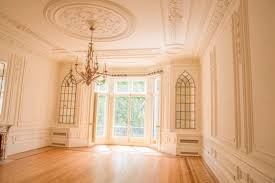
The word Petra states rock in Greek . Located in Jabal-Al-Madbah surrounded by arabah valley that runs from dead sea and gulf of aqaba in Jordan this architectural masterpiece is spread in the area of 264 square kilometers , discovered about 200 years ago this archaeology marvel is fascinating millions of peoples from the world before discovery of this city that this was lost city of Arabia . We can understand from this that Petra was not about small ancient town or city , this was much than today’s metropolitan .
History :
The first evidence of human settlements in the Petra is found in Arabah valley . About 9000 years ago small farmers settled here . In Neolithic and copper ages many early farmers and herders lived in Petra but that was not time when Petra was like full with architectures . Between 400 B.C. and 100 A.D. the city of Petra was emerging like a gem in the great Arabian desert . In this time period Petra became a trade centre and capital of Nabateans empire , the earliest empires and Arabians in the western Asia . The Nabateans inhabited Petra around 312 B.C. . Amazingly this was the time before Roman empires emerged in Europe . Petra had great importance in trade since ancient times , that this place was one the centre of the ancient trade routes that were connecting Europe through the valleys of Persia to Asia . The Nabateans controlled West Bank to the northern of the Arabian peninsula . Since the time of ancient trade Petra was epicenter for the travelers and traders . This all architecture of Petra is not build at one time , because the early buildings and settlements started in the valleys of Petra and were continuously building until 1000C.E. . Half of the Petra is build and rest half is carved in stones . The architectural monuments are carved in the stones of cobblestones cliffs and mountains . In the rules of Nabateans empires Petra inhabited around 20,000 peoples . Nabateans knew the importance of water , therefore they build oasis and small canals to reach with the need of adequate water supply . Nabateas were defeated by the Romans in 106 C.E. and became roman province of Arabia . Petra was a trade hub in the trade of Egyptians and Greeks during that time . Many Indian traders were using this route from red sea to Greece where Petra is lie .Many of the big monuments of Petra build around 200B.C.E. to 500C.E. . We can’t just count the number of monuments in the Petra valley because there are not just hundreds but thousands of monuments were built in this area and many of the ancient marvels have lasted for thousands of years . But the in second century sea routes from Petra declined and that was the time of the declination of Petra started . Later in 4th century a massive earthquake destroyed many structures in Petra . In the Byzantine era several churches were built in Petra but they were continuously declining . And in the Islamic era it was abandoned . But Petra was not for the remained medieval history , later in 1812 it was rediscovered by Johann Ludwig Burckhardt .
Why it is unique :
There are many unique thing about Petra that fascinate peoples around the globe toward it . If we took a closure look of Petra then we will realize how beautiful and wonderful is this . All the monuments and structure are masterpiece of architecture . We can find the early Nabateans rock cutted tombs and temples , The Siq , main entrance from east . The architectural style of Nabateans was a mixture of Egyptians , Hellenistic and Roman architecture .
Pyramid Tomb :
One of the first tomb the ‘ pyramid tomb ‘ was named after its four memorial stele which is unique in Petra . Such a Tomb is combination of real architecture with perfect geometry .
When carving these tombs and monuments , workers used four main stone tools . these we simple pickaxe , a pointed cutter used to cut stone , chisel used to create parallel lines and flat chisel . King Aretas 4 was important in the Petra history of architecture , he took the throne in first century between 9A.D. and 40A.D. . King Aretas 4 begin to build new monuments with best designs and equipments . He began to build colony streets and the most fascinating water diverting small cannels around the canyons .
The Great temple of Petra :
The greatest of Aretas 4 monuments is Petra Great Temple . This amazing and enormous structure is built in 7569 sq. metres . This is made of 120 column and tiled roofs , that the columns were capped with elephants heads . To the east of the great temple was Agora , which was a large pool and garden complex . Archaeologiest found great work of marble and sansstone in the complex . For pools and gardens the Nabateans deviced a system of aqua-duct , piping and shallow basins so that the sand and silt would be filtered . We can know from this that how well studied about architecture they were .
Al-Khazneh :
Al-Khazneh is one of the most beautiful and elaborated temples in Petra and also known as Treasury . This temple is completely carved in the sanstone rock . The forecourt is 6 m lower than it . The beatiful rock cut monument is 25m wide and 39m high . This probably built in the rule of King Aretas 4 . Archaeologiest have found traces of incense found here , this suggest us about this sites , that this was an important pilgrimage site .
Unique water system :
To control flooding and for the adequate supply of water , the people here constructed dams , levees and water transport system .
The Greek Temple
As monuments were building , citizens decided to build a theater . It was big construction on the edge of city . We can see the influence of Greek architecture in this theatre . It was the region where big ceremonies and plays were performed . The theatre had a sitting capacity of 5000 .
After the completion of this monuments and architecture Petra and the peoples here were enjoying golden ages , that not lasted for long time . At the curse of time , caravans and merchants use the routes of the north of Petra instead of Petra . The new king Rabbel 2 moved their capital of Petra to north Bosra , where he tried to boost agricultural implements . After his death , Nabateans lost its independence and became Roman Empire . This was the starting of declination of Petra . Around that time Romans turned this beautiful architectural city into a private monumental city . They turned the theatre for their private place . Petra remain unchanged until 363C.E. when major earthquake destroyed most of the cities monuments . These abandoned Petra . Some kings tried to rebuild the city but new construction was small and less quality . After in 636C.E. Petra come under the control of Umayyad , that was real end of Byzantine Era .
Petra was a wealthy and powerful city with an enormous land area .This became the centre of trade between the middle east and Roman empire . The trade brought many ideas from the continent and made this diverse city . It also provided resources for the construction of tombs , monuments and cities and turned this into oasis in desert . Some of the greatest elements of architecture all over the ancient world and has left the mark on the harsh desert landscape .
| By Shivraje Pandurang Gaikwad |


